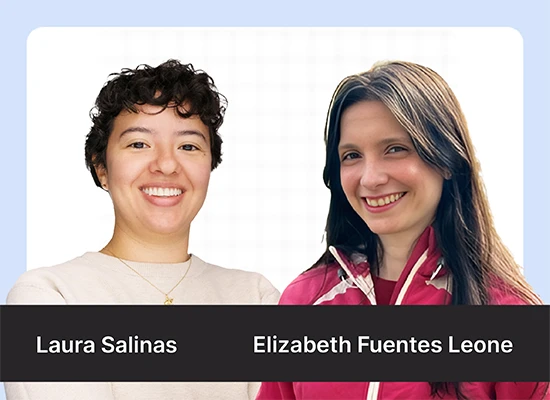Introduction
In machine learning, generating correct responses with minimum facts is essential. Few-shot prompting is an effective strategy that allows AI models to perform specific jobs by presenting only a few examples or templates. This approach is especially beneficial when the undertaking calls for limited guidance or a selected format without overwhelming the version with numerous examples. This article explains the concept of few-shot prompting and its applications, advantages, and challenges.

Overview
- Few-shot prompting in machine learning guides AI models with minimal examples for accurate task performance and resource efficiency.
- We will explore how few-shot prompting contrasts with zero-shot and one-shot prompting, emphasizing its application flexibility and efficiency.
- Advantages include improved accuracy and real-time responses, yet challenges like sensitivity and task complexity persist.
- Applications span language translation, summarization, question answering, and text generation, showcasing its versatility and real-world utility.
- Effective use of diverse examples and careful prompt engineering enhance the reliability of this approach for varied AI tasks and domains.
Table of contents
What is Few-Shot Prompting?

Few-shot prompting requires instructing an AI version with a few examples to perform a specific task. This approach contrasts with zero-shot, where the model receives no examples, and one-shot prompting, where the model receives a single example.
The essence of this approach is to guide the model’s response by providing minimal but essential information, ensuring flexibility and adaptability.
In a nutshell, it is a prompt engineering approach in which a small set of input-output pairs is used to train an AI model to produce the preferred results. For instance, when you train the model to translate a few sentences from English to French, and it appropriately provides the translations, the model learns from those examples and can effectively translate other sentences into French.
Examples:
- Language Translation: Translating a sentence from English to French with just a few sample versions.
- Summarization: Generating a summary of a long text based on a summary example.
- Question Answering: Answering questions about a document with only a couple of example questions and answers.
- Text Generation: Prompting an AI to write a section in a specific style or tone based on a few basic sentences.
- Image Captioning: Describing an image with a provided caption example.

Advantages and Limitations of Few-Shot Prompting
| Advantages | Limitations |
|---|---|
| Guidance: Few-shot prompting provides clear guidance to the model, helping it understand the task more accurately. | Limited Complexity: While few-shot prompting is effective for simple tasks, it may struggle with complex tasks that require more extensive training data. |
| Real-Time Responses: Few-shot prompting is suitable for responsibilities requiring quick decisions because it permits the model to generate correct responses in real time. | Sensitivity to Examples: The model’s performance can vary significantly based on the quality of the provided examples. Poorly chosen examples may lead to inaccurate results. |
| Resource Efficiency: Few-shot prompting is resource-efficient, as it does not require extensive training data. This efficiency makes it particularly valuable in scenarios where data is limited. | Overfitting: There is a chance of overfitting when the model is predicated too closely on a small set of examples, which might not represent the task accurately. |
| Improved Accuracy: With a few examples, the model can produce more accurate responses than zero-shot prompting, where no examples are provided. | Incapacity for Unexpected Assignments: Few-shot prompting may have difficulty handling completely new or unknown tasks, as it relies on the provided examples for guidance. |
| Real-Time Responses: Few-shot prompting is suitable for responsibilities requiring quick decisions because it permits the model to generate correct responses in real-time. | Example Quality: The effectiveness of few-shot prompting is particularly dependent on the quality and relevance of the provided examples. High-quality examples can considerably enhance the model’s overall performance. |
Also read: What is Zero Shot Prompting?
Comparison with Zero-Shot and One-Shot Prompting
Here is the comparison:
Few-Shot Prompting
- Uses a few examples to guide the model.
- Provides clear guidance, leading to more accurate responses.
- Suitable for tasks requiring minimal data input.
- Efficient and resource-saving.
Zero-Shot Prompting
- Does not require specific training examples.
- Relies on the model’s pre-existing knowledge.
- Suitable for tasks with a broad scope and open-ended inquiries.
- May produce less accurate responses for specific tasks.
One-Shot Prompting
- Uses a single example to guide the model.
- Provides clear guidance, leading to more accurate responses.
- Suitable for tasks requiring minimal data input.
- Efficient and resource-saving.
Also read: What is One-shot Prompting?
Tips for Using Few-Shot Prompting Effectively
Here are the tips:
- Select Diverse Examples
- Experiment with Prompt Versions
- Incremental Difficulty
Conclusion
Few-shot prompting is a valuable technique in prompt engineering, balancing the performance of zero-shot and one-shot accuracy. Using carefully chosen examples and few-shot prompting helps provide correct and relevant responses, making it a powerful tool for numerous applications across various domains. This approach enhances the model’s understanding and adaptability and optimizes resource efficiency. As AI evolves, this approach will play a crucial role in developing intelligent systems capable of handling a wide range of tasks with minimal data input.
Frequently Asked Questions
Ans. It involves providing the model with a few examples to guide its response, helping it understand the task better.
Ans. It provides a few examples of the model, whereas zero-shot provides no examples, and one-shot prompting provides a single example.
Ans. The main advantages include guidance, improved accuracy, resource efficiency, and versatility.
Ans. Challenges include potential inaccuracies in generated responses, sensitivity to the provided examples, and difficulties with complex or completely new tasks.
Ans. While more accurate than zero-shot, it may still struggle with highly specialized or complex tasks that demand extensive domain-specific knowledge or training.





